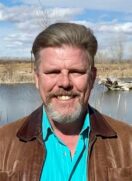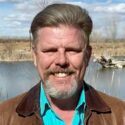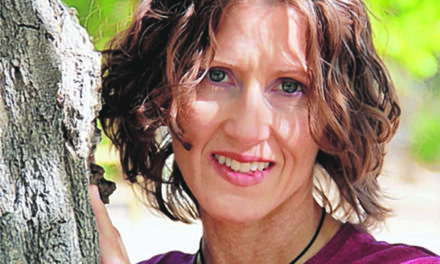Today is my first monthly column on the activities of the Valencia Soil and Water Conservation District and related natural-resource concerns. I joined the VSWCD staff as director in August 2020, and am glad to have this opportunity to reach out to the people the district serves.

Andrew Hautzinger
Where we came from: There are 3,000 soil and water conservation districts across the nation, and your district is one of the 47 SWCDs in New Mexico, all of which are considered independent government subdivisions of the state.
Like all of the nation’s SWCDs, the Valencia district’s origins harken back to the 1930s and the national trauma of the Dust Bowl years. In 1937, President Franklin Delano Roosevelt sent this message to the Nation’s governors: “The dust storms and floods of the last few years have underscored the importance of programs to control soil erosion. I need not emphasize to you the seriousness of the problem and the desirability of our taking effective action, as a Nation and in the several States, to conserve the soil as our basic asset. The Nation that destroys its soil destroys itself.”
Our district was established in 1947 to conserve and develop the natural resources of the state, provide for flood control, preserve wildlife and to support agriculture and community education.
Who we are: Our district comprises more than one million acres; we serve all of Valencia County and a portion of Socorro and Bernalillo counties and includes the Laguna and Isleta Pueblos. Our staff of five is guided by an elected, volunteer board whose seven members serve staggered four-year terms of service.
Our programs rely upon a 1/4 mil levy passed in 2013 for more than 90 percent of our funding. Our mil levy is the lowest among the SWCDs in the state. We support local farmers and ranchers to improve their own management of soil and water resources, and we partner with local teachers and schools in support of the state’s Next Generation Science Standards.
The district provides partial reimbursements to taxpayers working on a variety of conservation projects, including installing rain-harvesting systems, establishing pollinator gardens and providing free soil tests to anyone in the district. We hold technical workshops on topics such as no-till direct seeding, organic farming, irrigation efficiency and other practices that promote healthy soils and water conservation.
The district owns three properties, including the 97-acre Whitfield Wildlife Conservation Area, which has grown to be a cherished community asset, offering our citizens and local students a unique outside space where visitors of all ages can learn about environmental science and enjoy being immersed in the natural world. Arguably the county’s premier wildlife viewing location, Whitfield’s walking trails brings visitors — and their spending — into the county.
During the pandemic, it’s been great to see so many cool things happening in the district. We typically would provide our students from the Los Lunas and Belen schools with 5,000-6,000 student visits (pre-pandemic) to Whitfield each school year, with the Friends of Whitfield organization hosting a series of fundraising events to pay for the school buses that bring students to the conservation area.
During the pandemic, students have been unable to physically visit the area. In response, VSWCD has created virtual nature lessons on YouTube that allow students to do activities in their backyards and in natural spaces around where they live, while also incorporating at least one of the state’s standards for each grade level. These videos have supported the home-learning needs of more than 450 local students in 2020.
Another local effort led by the district is the East Valencia Urban Gardens Program, a collaboration between many organizations, including Valencia County and Youth Development Inc. Each year, the gardens provide opportunities for hundreds of community members to learn to grow affordable food in our arid climate and will begin to support school gardens in 2021. Centered around two rapidly expanding community gardens at El Cerro Mission and Meadow Lake Community Centers, we also mentor 15 youth farming interns each that donated over 2,500 pounds of fresh produce to East Mesa families in 2020.
I am honored to have this column as a way to reach the many communities that make up our district. I’ll close by offering a still-relevant 1934 quote from a giant in our nation’s conservation legacy, Hugh Hammond Bennett, known as the father of soil conservation: “From every conceivable angle — economic, social, cultural, public health, national defense — conservation of natural resources is an objective on which all should agree.”
(Andrew Hautzinger is the district director of the Valencia Soil and Water Conservation District.)

Andrew Hautzinger, guest columnist
Andrew Hautzinger has been the district director for the Valencia Soil and Water Conservation District since 2020. Prior to that, he was a volunteer VSWCD board member for 12 years and spent many years volunteering at the Whitfield Wildlife Conservation Area.
Hautzinger has a bachelor of science in watershed sciences from Colorado State University. He worked for more than 27 years as a federal hydrologist working for agencies within the Department of Interior including the U.S. Bureau of Land Management, U.S. National Park Service, and for the final 20 years of his career, with the U.S. Fish and Wildlife Services’ National Wildlife Refuge System.















